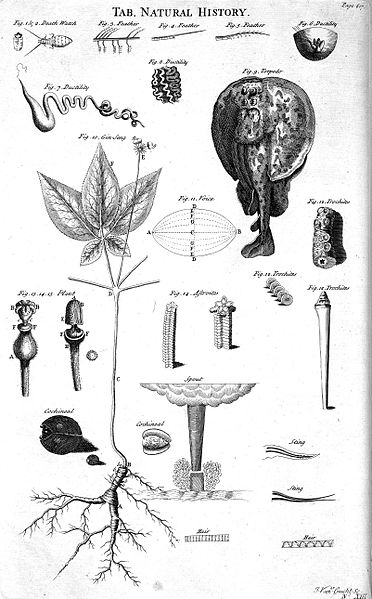Commenting on:
And Now A Word From Our Sponsor …
Does your dualism lose its flavor on the bedpost overnight?
Unblock your inquiry with a dose of Peirce’s Elixir Triadic❢
☞ Inquiry Driven Systems : Are There Apps For That?
In which Jon Awbrey raises the subject of the “Relationship between emergent-evolved systems and engineered systems.”
That points toward what I like to call the “natural history” of cognition, inquiry, logic, mathematics, language, etc. We might learn things from the natural, sequential development of such faculties and systems that could be either prescriptive or proscriptive for modern engineering practice.
I like looking for the earliest and simplest instances of things. Unfortunately the early natural history of most things is largely unknown. Take the evolution of the triangle or the number three in human cognition, for example. But even in the absence of historical data we might gain something from thought experiments or inferences about what the evolutionary sequence might have been in the light of things we do know about the human bio-computer.
Incidentally, thinking about threes and triangles, the basic transistor (perhaps a fairly close man-made analogue of a primitive neuron or a even a bit of DNA) that we now “print” with exotic nano-particle ink is a thing with a tripartite configuration. I guess such three-part structure actually applies to most switches, many instances of which greatly predate biology.
And commenting on a related post on Jon’s blog, Inquiry into Inquiry, Definition and Determination : 10 :
“Suffice it to say that a sign endeavors to represent, in part at least, an Object, which is therefore in a sense the cause, or determinant, of the sign even if the sign represents its object falsely.” — Charles S. Peirce
Typically symbols or signs are objects of higher compression (or lower resolution or complexity) than the objects they represent, but in some cases the reverse may be true.
I think of knowledge as consisting of networks of associations. If each association has a probability and each network has a geometry, then the structure of knowledge isn’t much different from the structure of physical stuff. Perhaps we will find a sort of quantum mechanics or geometrodynamics of knowledge.
Presumably the brain uses a wide variety of relatively specialized algorithms and heuristics (evolved and learned) depending on the kinds of signs, objects or data types and structures involved in a task.
How useful Is fractal geometry for representing recursive networks of objects-associations?
A mirror of silver and glass makes no critical analysis of what it reflects, but we think that few (if any) reflections are perfect. When light reflected from objects in our field of vision enters the eye a series of additional reflections are created by our optical and visual systems. The eye and brain apply adaptive-corrective algorithms all along the way. Among these are associations with previously recorded and computed objects, signs, rules, etc.that provide context and some critical analysis — a comprehensive (in some degree) grasp. Many “leaps and grasps” have occurred before we are consciously aware of an image at all.
What we know or comprehend about something is largely (wholly?) based on comparisons and contrasts (positive and negative associations) with other stuff we already know. Following the development of knowledge backwards to its origins, the original vestige of prior knowledge presumably comes somehow from the DNA and possibly other materials of the fertilized embryonic germ cell and this is inherited by the first neuroblasts that go on to form the brain.
Contrasts and comparisons (associations) are fundamental operations of the biochemical machines that run up and down the DNA chains making DNA repairs, copying it, building proteins based on it, etc. At the biochemical level reflections (associations) typically come in the form of positively or negatively matching shapes and electromagnetic charges.
I think we agree that the geometry of the basic unit of association is triadic. I tend to think of it most often in terms of two nodes and a connecting line, the basic unit of a network; rather than as a triangle. A triangle, it seems, has more than three parts (3 sides + 3 vertices + 3 angles + an enclosed area = 10 parts — at least!).
Poor Richard
Related articles
- 3 (number) (Wikipedia)
- triad/trichotomy (philosophy) (Wikipedia)
- Peircean Induction and the Error-Correcting Thesis (Part I) (errorstatistics.com)
- A Brief Natural History of All Things (philadelphiareviewofbooks.com)






 Church of Reality
Church of Reality Critiques Of Libertarianism
Critiques Of Libertarianism P2P Foundation
P2P Foundation Stanford Encyclopedia of Philosophy
Stanford Encyclopedia of Philosophy The Stone
The Stone
Leave a comment